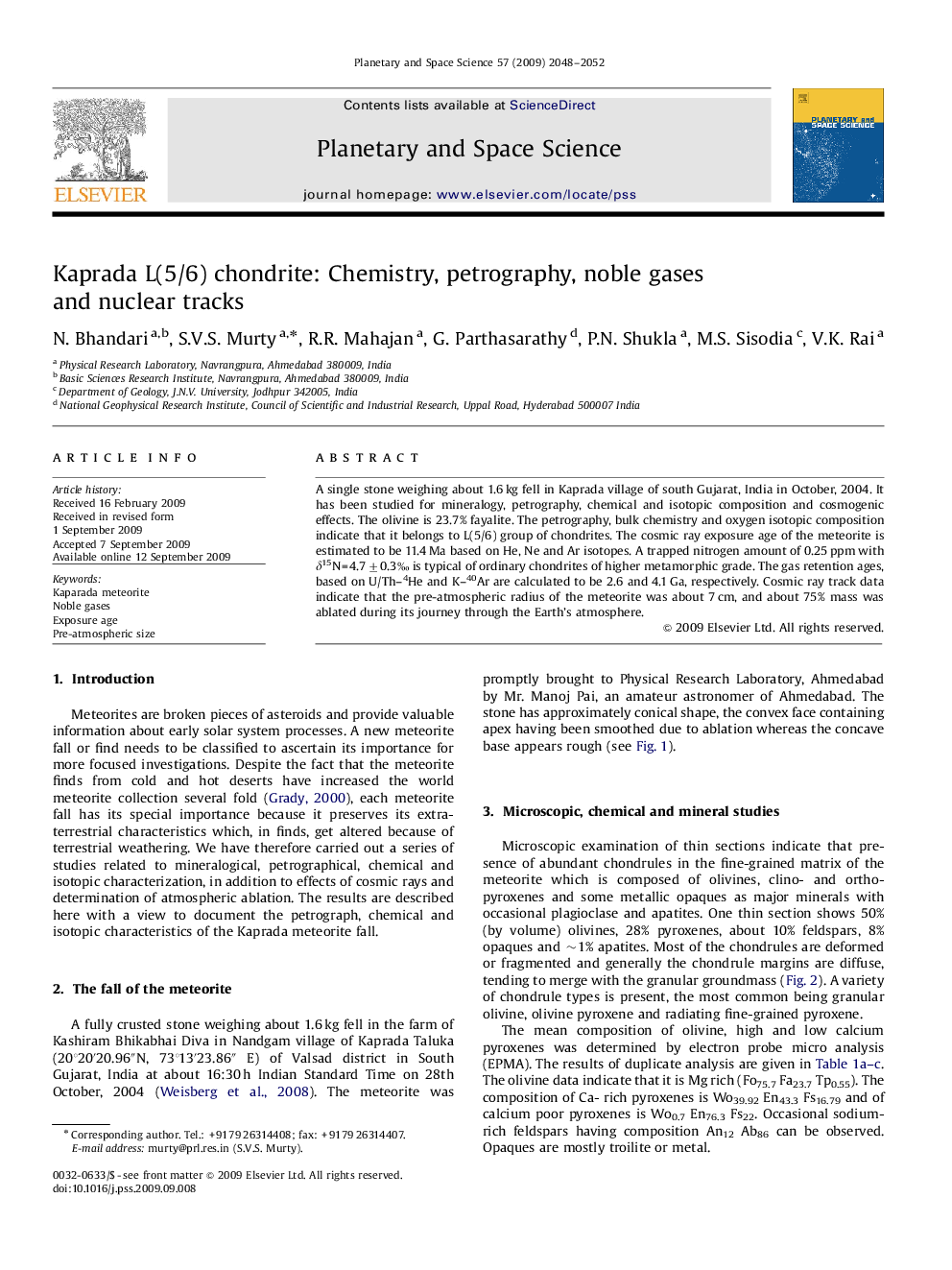| Article ID | Journal | Published Year | Pages | File Type |
|---|---|---|---|---|
| 1781959 | Planetary and Space Science | 2009 | 5 Pages |
Abstract
A single stone weighing about 1.6 kg fell in Kaprada village of south Gujarat, India in October, 2004. It has been studied for mineralogy, petrography, chemical and isotopic composition and cosmogenic effects. The olivine is 23.7% fayalite. The petrography, bulk chemistry and oxygen isotopic composition indicate that it belongs to L(5/6) group of chondrites. The cosmic ray exposure age of the meteorite is estimated to be 11.4 Ma based on He, Ne and Ar isotopes. A trapped nitrogen amount of 0.25 ppm with δ15N=4.7±0.3Ⱐis typical of ordinary chondrites of higher metamorphic grade. The gas retention ages, based on U/Th-4He and K-40Ar are calculated to be 2.6 and 4.1 Ga, respectively. Cosmic ray track data indicate that the pre-atmospheric radius of the meteorite was about 7 cm, and about 75% mass was ablated during its journey through the Earth's atmosphere.
Keywords
Related Topics
Physical Sciences and Engineering
Earth and Planetary Sciences
Geophysics
Authors
N. Bhandari, S.V.S. Murty, R.R. Mahajan, G. Parthasarathy, P.N. Shukla, M.S. Sisodia, V.K. Rai,
